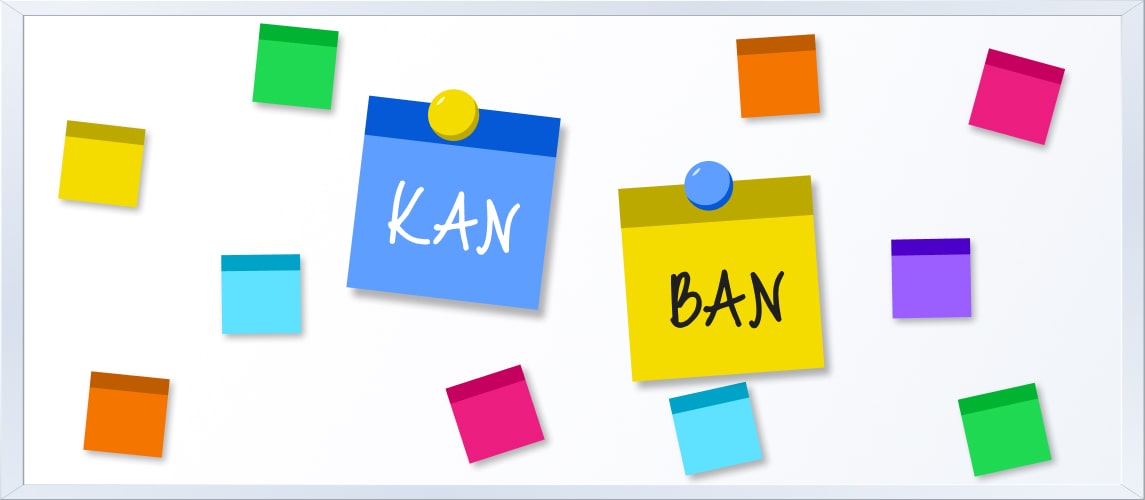Kanban, just like Scrum, is a workflow methodology. They differ from each other, but have the same common goal, which is to increase work efficiency. Kanban is characterized by a simple and flexible approach that allows to constantly improve and establish communication in the team.
The main difference between Kanban and Scrum is the length of iterations. If in Scrum the team works in sprints for about 2 weeks, then in Kanban the developer faces new tasks every day.
The Kanban methodology in itself is a system of setting targets that embodies the values of Agile. It helps the team to track the progress of the assigned tasks. In addition, Kanban helps distribute the workload among developers. Using the methodology, you can easily manage a team and control deadlines of tasks. Like any other system, Kanban has basic principles:
- Grouping. For convenience, all tasks are grouped based on their own statuses: to do, in progress, done, etc. The further fate of the task depends on the stage of its execution, this allows you to visualize the workflow. It is noteworthy that the statuses can be very different; it all depends on the project and the wishes of the developers themselves.
- Visualization. Each task is fixed in the plan, and its status is updated as it is completed. So step by step, the team clearly sees the progress of implementation and the time spent on a particular task.
Both available tools in the form of a board with stickers and software are suitable for the implementation of Kanban. Like any other methodology, the system has not only advantages, but also disadvantages.
Pros of Kanban
- Flexible planning. The system allows you to concentrate on one task. At the same time, you can quickly change the priority without affecting the workflow as a whole.
- Time control. Kanban helps you track your workflow, control its duration, and predict the deadlines for solving task.
- Efficiency. With the help of the methodology, it is easy to identify tasks that require more time and / or resources to solve them.
Cons of Kanban
- Long term planning. Kanban is not suitable for long term work. The system performs well with current tasks, the priority of which may change in the course of work.
- Big teams. The ideal number is no more than 5 people. If there are more developers, then the work becomes much more complicated. The process itself will no longer be so easy to control.
There has long been a practice of using 2 methodologies at once on one project. This is one of the best ways to organize workflow. For example, Scrum can be used at the start of work before the release. This will allow you to control the progress of work and the timing of its implementation. But Kanban will become a good tool after the release. At this stage, feedback is received from the users of the product: many small tasks in a chaotic manner.
Kanban is ideal for solving them. Which methodology to prefer depends solely on individual wishes. It is important to try to implement the principles of the methodology as much as possible, and then this will be an important step on the way to success.
